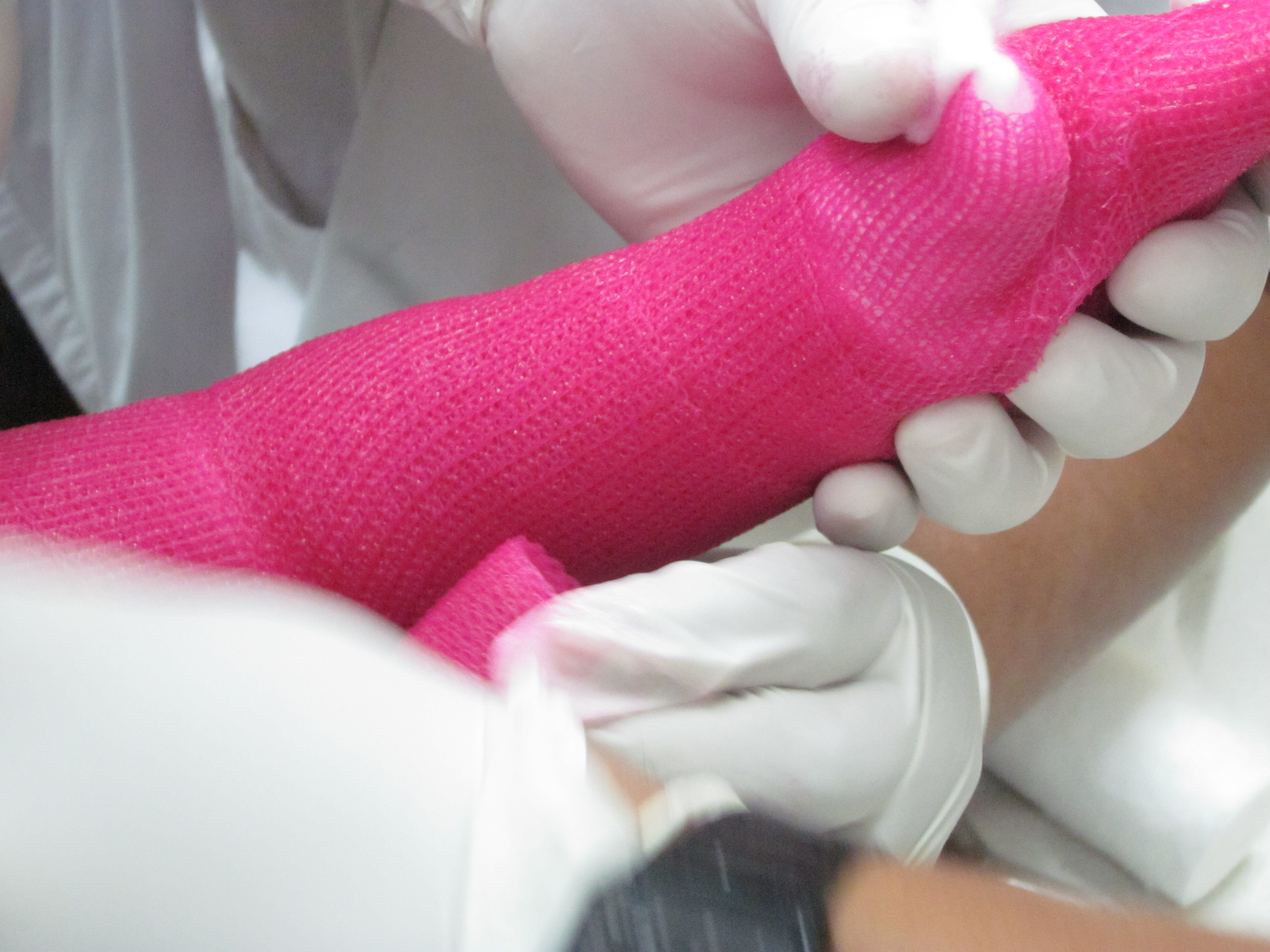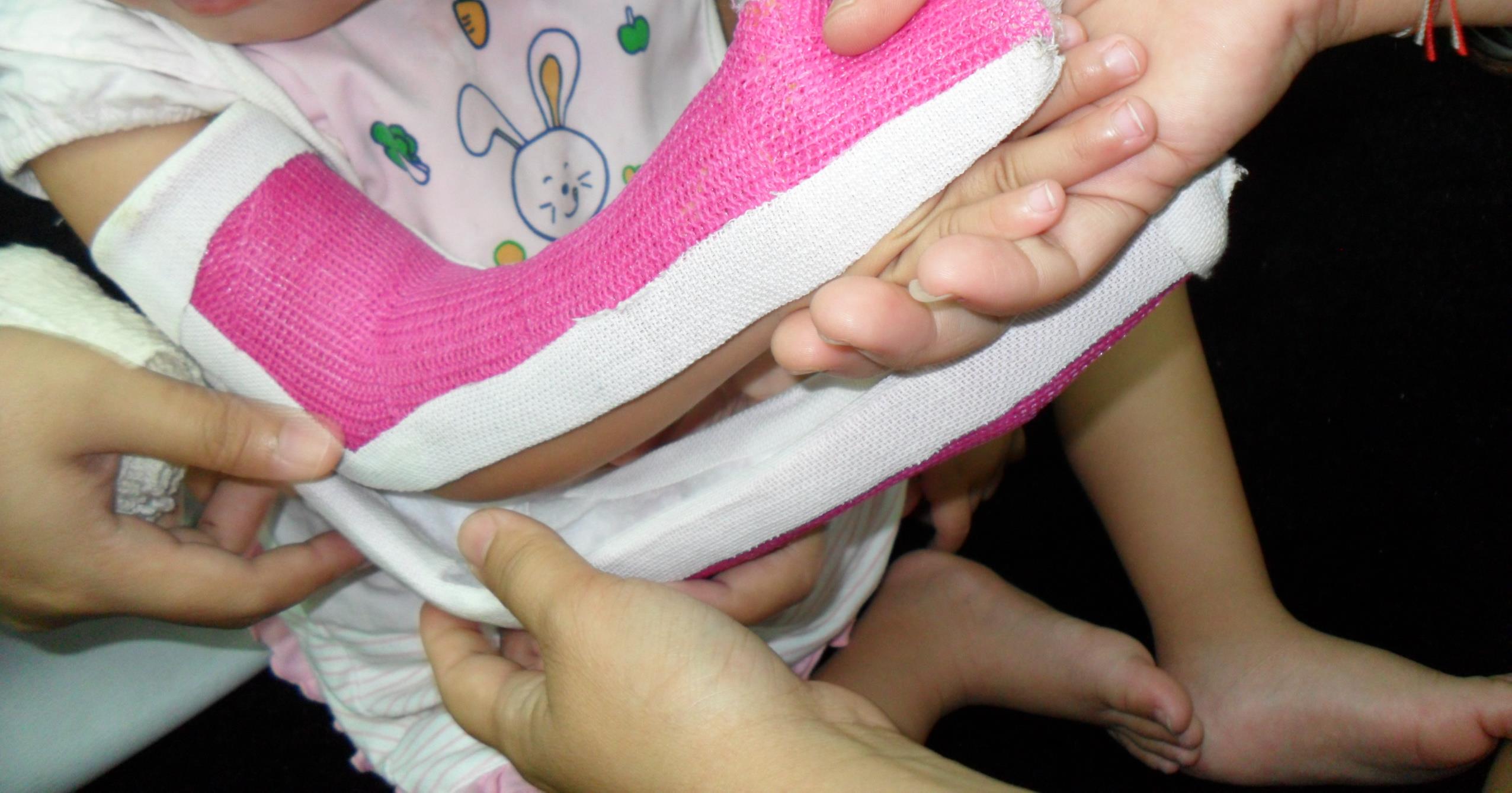Introduction
What is Constraint Induced Movement Therapy (CIMT)?
Constraint Induced Movement Therapy (CIMT) is a type of treatment that trains the brain to function again after an injury such as stroke and cerebral palsy (CP). The technique is a study of the Expert Behavioral Neuroscience, Dr. Edward Taub in collaboration with the University of Alabama Birmingham in 1995.
The study shows patients can be trained to improve the function of the ability to move weaker limbs than rely on the normal limb.
CIMT consists of three components:
-
Therapeutic use of intensive training a weak hand in a structured and repetitive activity
-
Constraints / prevent the normal use of the hand
-
Monitor the use of weak hand and solve problems arising in the real-life obstacles
 |
Who can receive treatment Constraint Induced Movement Therapy (CIMT)?
CIMT group focuses on three patient populations :
-
Stroke
-
Cerebral palsy
-
Brain Injury (Traumatic Brain Injury)
The effectiveness of CIMT has been reported in several studies of adult patients with hemiplegia resulting from stroke and brain injury. There are also many studies that have been conducted to show the effectiveness of Cerebral Palsy children.
Occupational therapists play an important role in recovery activities for children with cerebral palsy using CIMT technique. The focus is on the development of skills necessary to perform activities of daily living and functional upper limbs such as grasping, reaching and holding goods.
Criteria Children for Rehabilitation Treatment Programs Using CIMT:
-
Inclusion Criteria
-
Experience the side of the body hemiplegia or weakness from birth or as a result of such injury (secondary to stroke, CNS infection, TBI etc.).
-
Have a significant deficiency in the movement of the hand compared to other
-
No permanent disability in the joints (fixed contracture) in the affected limb
-
Have a good health, can follow instructions and cooperate during treatment.
-
Had undergo Magnetic Resonance Imaging (MRI) or Computed Tomography (CT Brain) already endorsed by the expert / medical officer.
-
-
Exclusive Criteria
-
Experience a progressive neurological or those who suffer from recurrent stroke
-
Parents who are unable to carry a child CIMT program at the time and place fixed
-
What Constraint Induced Movement Therapy treatment (CIMT) done?
-
Children must be referred by a specialist / medical officer
-
The therapist will discuss with parents / guardians of the children who meet the criteria for inclusive and exclusive criteria describe the CIMT program, obtain consent, and fix the schedule CIMT
 |
Constraints / restricts the use of hand-normal (strong)
-
Application of lightweight fiberglass cast / splint on the upper arm to the fingertips of strong / normal will be done on the first day.
-
Watch children will be lined with soft fabric to promote the absorption of sweat.
-
Cast will be on new parts if the cast is either damaged or wet.
 |
CIMT Intensive Program
-
A preliminary assessment of the level of child development and the functionality will be made at the first session
-
Treatment will be start on the second day
-
Each treatment session takes at least 3 hours / day for 3 weeks in the hospital..
-
Weak Hand will be trained on a recurring basis by level of motor function by using a toy and self-care activities that are appropriate to the child
 |
 |
 |
The Constraint Induced Movement Therapy (CIMT) home program
-
Involve activities such as activitiy of daily living such as eating, drinking, dressing, etc.
-
Parent / guardian will be ask to record the time and nature of the activities carried out
-
Recording at home is encouraged
Group support / Reference
Contact Occupational Therapy Unit at the nearby hospital for further inquiries and information.
| Last Review | : | 28 August 2020 |
| Writer | : | Zawiah Bt Nordin |
| Accreditor | : | Rokiah Bt Alias |
| Reviewer | : | Tan Foo Lan |







